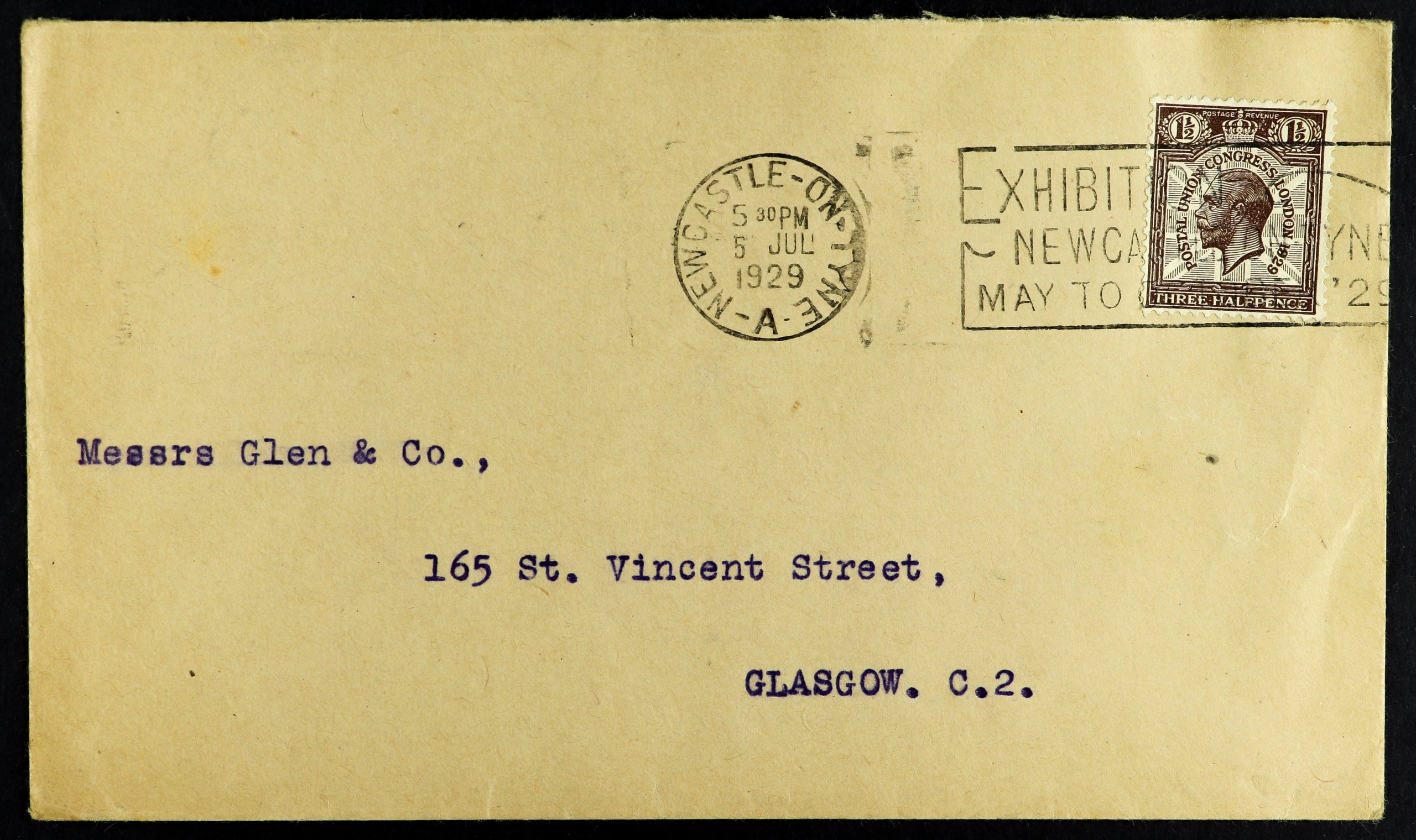KING GEORGE V STAMPS

GB.GEORGE V – 1929 POSTAL UNION CONGRESS 1d scarlet, a never hinged mint lower right corner “K29” control block of ten, one showing “CO” joined, SG Spec. NCom6e, never hinged mint.

GB GEORGE V 1929 POSTAL UNION CONGRESS 1d scarlet, Broken wreath at left, SG Spec. NCom6d, on a commercially used postcard, tied by Emsworth upright cds well clear of the variety, very scarce.

GB.GEORGE V 1929 POSTAL UNION CONGRESS 1½d purple-brown, “1829” for “1929” variety, SG Spec. NCom7c on a neat commercial envelope from Newcastle to Glasgow, tied light Newcastle Exhibition machine cancel, very scarce.

GB.GEORGE V 1929 POSTAL UNION CONGRESS 1½d purple-brown, blob on “1” variety, SG Spec. NCom7e, a mint example with large part gum, with some faults incl. upper right corner perf rounded and a small black ink mark at lower left. The rarest PUC variety, cat. £550.

GB.GEORGE V 1929 POSTAL UNION CONGRESS (10th May) a Francis Field circular advertising the supply of the PUC issue, bearing PUC ½d tied by “BM” triangular coded machine cancel, “10 May 1929” cachet in violet, and “USED ON DAY OF ISSUE” cachet in black, scarce and unusual.
We sell 1911–1937 George V stamps, collections, complete sets, errors and varieties
The world’s most famous stamp collecting King did not have his own way, at least to begin with. The new King George V did have some stamp design experience having been invited in 1903 to design Canada’s definitive stamps, he and his close philatelic advisor had settled on a three-quarter portrait of his father and the final design had been well-received. Some 4 months into his reign King George V was asking for his friend’s help again and between them, they decided on another three-quarter portrait taken from a photograph by the famed royal photographer William Downey. The result was the first King George V stamps issued on 22 June 1911, a ½d green and 1d red which was universally attacked in the press and earned the unfortunate title of the “Monkeyfaces”. For such an eminent philatelist as well as the Monarch it was somewhat embarrassing. The “Downey Heads” with two versions of the heads (the latter much less simian) and a wide array of watermarks, shades, dies and plate flaws are extremely popular amongst collectors.
At his own expense, the King commissioned a new profile head and definitive stamps to 1 shilling began to appear in August 1912. Collectors identify two distinct issues separated by the watermark in the paper, the Wmk “Royal Cypher” stamps from 1912 to 1924 and the Wmk “Block Cypher” from 1924 to 1926. A third definitive issue similar yet clearly different was issued between 1934 and 1936, it is known as the “Photogravure” issue due to the new printing technology employed. All three issues are collected by specialists who seek out the many different shades, watermark errors, control numbers, plate flaws and so on.
King George V’s favourite issue was quite rightly the “Seahorse” high values with stamp collectors recognising 4 distinct sets plus many beautiful shades, re-entries, watermark errors and other variations of this magnificent 2s6d, 5s, 10s and £1 stamps which were printed by Waterlow, De La Rue and Bradbury Wilkinson between 1913 and 1919, then re-engraved and reissued in 1934 by Waterlow.
We recommend the excellent listings in the Stanley Gibbons Catalogue and for those wishing to dig even deeper the Great Britain Specialised Stamp Catalogue Volume 2 “King Edward VII to King George VI” catalogue. For further reading on this and so much more we would heartily recommend the eminently readable “The Queens Stamps” by Nicholas Courtney.





